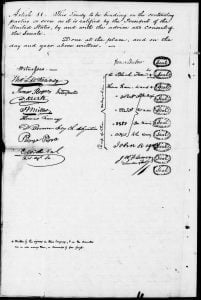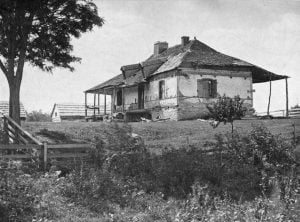The Stokes Treaty Commission
The Osage who left their old home and removed to the Verdigris, were known as the Arkansas Osage. They had no agent until 1822 when Nathaniel Philbrook was appointed sub-agent for them. He was drowned at the mouth of Grand River the latter part of March, 1824 as related by Colonel Chouteau. David Barbour was then appointed in his place at a salary of five hundred dollars yearly. Governor Alexander McNair of Missouri had been appointed agent for the Great and Little Osage on the Missouri and Upper Grand rivers. The difficulties caused by the Arkansas Osage were so frequent … Read more





